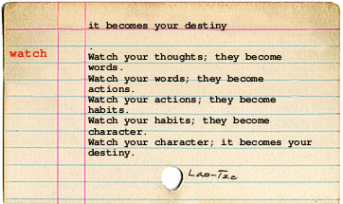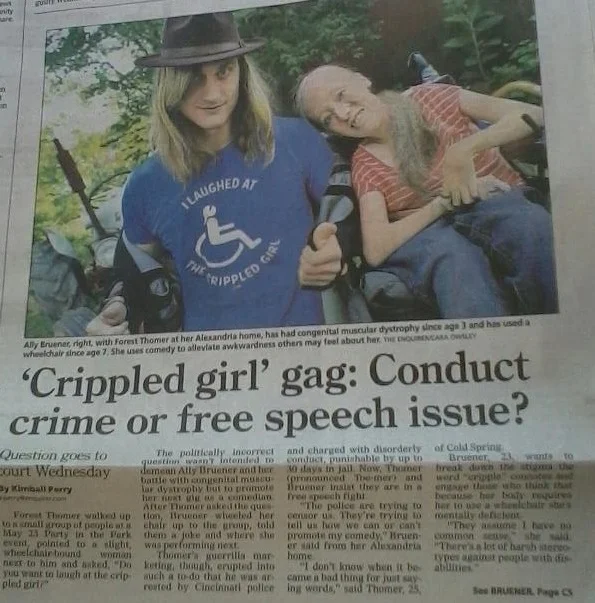well maybe not that far back…
It was freshman year of college, and I was going to be a documentary filmmaker, thank-you-very-much. If not that, then National Geographic would certainly be knocking down my door eventually anyway. Naturally, I took a course called Non-Fiction Film to head me in this direction. I didn’t know it at the time, but this course became more or less a game changer in my straight and narrow path toward The Oscars.
One of the directors we focused on was Frederick Wiseman (who, by the way, is a very impressive name to drop when you’re applying for film school, FYI). He directed in true Cinéma vérité style, and had me mesmerized with his fly-on-the-wall approach to documenting a mental institution. The film is called Titicut Follies, and it repulsed me, angered me, and turned the tables on me.
near minute 18 on the youtube video linked below, you’ll find this shot
Wikipedia Synopsis: “Titicut Follies portrays the existence of occupants of Bridgewater, some of them catatonic, holed up in unlit cells, and only periodically washed. It also depicts inmates/patients required to strip naked publicly, force feeding, and indifference and bullying on the part of many of the institution’s staff.”
How could human beings be disregarded so blatantly in our country’s not so distant past, without someone holding up a yellow flag, calling a major foul? I knew what I had to do. I went to my closet of yellow flags and started packing for the journey to come.
“She has explosive mood disorder. She may bite, or hit, pull hair, or act out in fits of rage. We haven’t been able to keep a staff person on board with her for long, usually people ask to leave. We’re looking for someone like you because you’re so calm, we think your demeanor will be able to handle when she gets upset.”
This was my supervisor, telling me about a new “consumer” I would start working with. I started work as a caregiver after a position as a camp counselor for people with disabilities led me to the field, and one year after I graduated from college I was practically begging the young woman who interviewed me to give me the position. Not because I had been unemployed for long, I had just moved back to Cincinnati and was only out a couple of weeks. I guess it was part extreme desire to help people, and part underground investigation into the world of a person with a disability. My bag of yellow flags in tote.
I would be the best at calling foul.
“We really need someone to start immediately. We trust that you know enough and can work with difficult cases, so you don’t have anything to worry about. In any other situation I would be there to help, to train you for a day with her, but one of the staff who has worked with her a while can show you the ropes. She takes medication three times a day, always eats out every Wednesday and Sunday, she goes to the grocery store….”
Her voice droned on, I felt swallowed by the details. She had just described a monster to me, with claws, sharp teeth and all, and then told me I can handle it. Well, after just 2 months of working in this position, I felt that might be a compliment. They want Me to take on one of the worst consumers they’ve got, because I am special.
The hallway to her apartment stunk, the dimly lit stairwell nearly hid the stained carpet leading up the steps. Knock knock.
“Hello?!,” the voice elevated at the “o”.
It was quicker than I expected, I couldn’t get a third knock out before the door swung open. I had stood close to the door as I knocked, so by the time I realized she was standing there in front of me we were nearly in each other’s faces. At first, her appearance came to me in pieces, like data building out randomly to form a picture. Wild hair. Balmy skin. Untamed eyes. Frumpy clothes. A thick build. I wanted to grimace.
In the expectation that right then and there, her rage would rear its ugly head before me and send me in to panic mode, I sucked in some extra air and took a step forward into her apartment.
Abigail.
“Hiiiii,” she said invitingly.
“Hello, I’m Katie.” My senses were coming back to me, and I smiled at her softness as she greeted me. Maybe everything they told me was wrong.
Behind her, her caregiver on duty shuffled around so she could show me in the door.
“Move out of the way so she can get in Abby!” she said.
The tone of this caregiver was less inviting, but I figured she must have to be tough to work with someone so aggressive as Abigail.
“Abby and I went to the grocery store yesterday and bought stuff for dinner,” she immediately began. “The only thing she’ll eat is hot dogs, or there are some microwave dinners in the freezer you can heat up. She takes a bath every night at 8pm, and has to get up early for work so she goes to bed after that. Usually her meds make her too tired to stay up real late anyway. Did Terry tell you how to fill out her daily logs?”
“Yes…” I nodded. We had walked around the small apartment and stopped by the couch covered in plastic. I fumbled looking through the binder she thrust at me, searching for the required documentation, but all the while distracted by my fellow caregiver’s body language which told me she was in a hurry to leave. She wasn’t going to stay and “train” me at all… I was going to be left alone with her.
“Uff,” I thought. “No problem.” I wasn’t going to let it bother me. I have traveled on sketchy midnight trains through Transylvania, coached hours of labor, and ate coagulated cow blood (at first unknowingly, then knowingly). I could be brave.
I heard the story about Abigail and believed the picture that was painted of her to be true. What I found was something opposite, someone who was not a monster at all, but a young woman close to my age who had passions, interests, and gifts to be shared.
Inherently, human beings are of community, we take social cues from our culture, and we adapt to our environment. Immediately, I was curious about stories like Abigail’s, and how they fit into our cultural dialogue.
So, like any anthropologist would, I began taking notes. Literally. Not case notes about Abigail, but rather as her life as a “consumer.” I noted patterns. Transient “staff people” in and out who take over the remote until the shift ends. And cook hotdogs. One day they love you and bring you a potted plant, the next they find another job and someone new is getting frustrated, trying to figure out why you’d like to continue this “watering” business so badly.
Most of all, I noted how Abigail’s main access to community was no longer family. It was staff. But it seemed that the system she was a part of was adding to her isolation. It started with the story I was told about her before I even met her, the girl with explosive behavior disorder who had a “history” of violence… and ended with the lack of motivation in staff to do anything more than required to support her life.
Truthfully, in the world of “caregiving” I was in, there was rarely any continuity from one “shift” to the next, so very little team work, and very little spirit. And, somewhere in all that blandness, Abigail was lost, invisible… quietly watching it all so mundanely happen around her. We end up disabling the person, as Judith Snow put it.
In rides the white horse.
During SRV training in West Virginia, we met a man who drives buses part time, and cares for horses part time. He has one horse, a white horse, that he trains specially for therapy purposes for people with disabilities. In all his good intentions, I think of how little Abigail could use a ride on a white horse right now, something that would “fix” her explosive tendencies. Instead, I think about how very much in need of a few more friends she is. I am interested, instead, of telling a new story about Abigail, one that I know that doesn’t involve any violent past, or explosive behavior. One that speaks to her humor, her compassion, her sweetness. But her old story follows her, and doesn’t lend itself to new friends very easily.
Some weeks caregiving, seeing people like Abigail open the door for me and ask how my nieces and nephews were doing was the reason I had to keep doing the work. She remembered what I did last week with my family, and wanted to know what my favorite restaurants were. We talked about musicals, and I was able to convince the supervisors to let me go with her to her very first live performance (even though they insisted she hates crowds and will throw a fit in public). We smiled the whole time.
But most weeks, caregiving felt like being part of a disjointed body of weakened limbs. For many of the women I was working with, single mothers working their way through night classes, money was a big issue. I had student loans to worry about, but compared to my coworkers this was nothing. The wages for a caregiver are that of a hostess at a restaurant. You greet, you seat, and you wait for the next person to walk through the door. At 9 dollars an hour (9 being the high-end of the payroll), it seemed too much to ask to give more gusto to the work, to go above and beyond. Here’s where I throw a yellow flag. Or maybe all the yellow flags I have left in my bag. It’s at the system, however cliche it may sound.
I suppose that’s why I had to leave my job as a caregiver. It wasn’t because of Abigail, but the system that kept me from feeling I could truly make a difference in her life. Today I can call Abigail and pick her up to go out, with some resistance from staff who worry they might get in trouble for letting her hang out with me (not because we shoot up heroine together, but because we’re friends.. and there’s no paperwork for that). No one can fire me from being her friend. So perhaps, ultimately, I left the job in return for her friendship.
(read more about the danger of a single story here)
























































